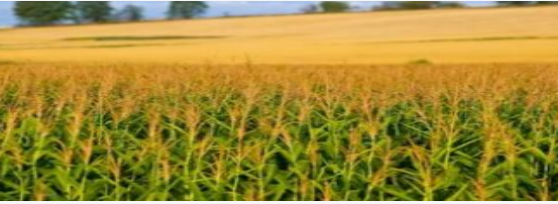How can smart sensors increase crop production?
Everyone's education from childhood is to cherish food and prevent waste. Grain is a necessity for people's lives, and grain production also requires a time period, and the output depends on the quality of the crops. In fact, the food issue is not just an economic issue, but a security issue. It will not adjust the market demand by increasing prices a little like other commodities. Once food is scarce, famine disasters will occur, endangering human life and causing social chaos. It can be seen that grain is a hard demand, and grain output is also an important issue that deserves attention.

In fact, the food issue is something that countries in the world dare not ignore. According to the Science and Technology Daily News, the global population is growing rapidly, and it is expected to reach nearly 10 billion people by 2050, which means that the world needs to increase food output by about 70% (it also needs to calculate the need to raise living standards). However, behind this growing demand, food prices may rise, may cause some people to fall into poverty, and there may be starvation caused by insufficient food. On the other hand, agriculture itself is also facing severe challenges, including pressures such as climate change, environmental pollution problems and insufficient cultivated land resources.
Fortunately, technology has given human magic. In the face of difficulties, innovative technology always has solutions. It is reported that the Antal project, funded by the EU's largest research and innovation plan, Horizon 2020, is launched to address these challenges through the work of the digital agricultural revolution. The project is currently developing smart sensors and big data technologies that can help maintain a balance between precision agriculture and sustainable agricultural development.
As we all know, the development of sensors has solved many difficulties for people. With the advancement of intelligent development, smart sensors have gradually become popular in the market and are beginning to be used in various industries. Smart sensor is a sensor based on the function of ordinary sensors, adding certain programming automation capabilities and more optimization functions. It has a microprocessor and has the ability to collect, process and exchange information. It is a sensor integration and microprocessor Combined products.
This time, the project uses smart sensors for agricultural innovation, and various sensors on the farm can collect more comprehensive and detailed information. In addition to miniature sensors attached to animals and plants, handheld sensors and pebbles-shaped sensors scattered in the field, there are also sensors that can be moved freely on small robots. Compared with traditional agriculture, advanced sensor technology can track factors such as soil moisture, monitor plant health, and detect animal and plant disease trends near the farm, which is beneficial to increasing crop production.
In addition to the use of sensors, this project also uses big data technology. Big data technology can upgrade traditional agriculture to precision agriculture. Scientists collect and organize a large amount of data, then use artificial intelligence to analyze it, and finally come up with a "tailored" algorithm to provide farmers with accurate recommendations. For example, information such as exact planting time, irrigation frequency, fertilizer requirements, suitable crops, etc. Under big data technology, farmers can use the corresponding programs to track the real-time growth of crops in the field through computers or mobile phones, make planting plans in advance, and increase yield and profit. This also truly realizes that farmers do not go out and know the field.
The development and innovation of science and technology continue, and in the future, people will use satellite imaging, drones, thermal imaging and hyperspectral cameras to collect more data. Increasing investment in science and technology in agriculture can increase yields, reduce risks, and increase resistance to factors such as climate change and price fluctuations. Undoubtedly, the development of technology has promoted human progress and helped humans tide over difficulties. It is believed that in people's tireless innovation, natural risks will no longer threaten crop production and supply.
If you want to know more, our website has product specifications for sensor, you can go to ALLICDATA ELECTRONICS LIMITED to get more information

